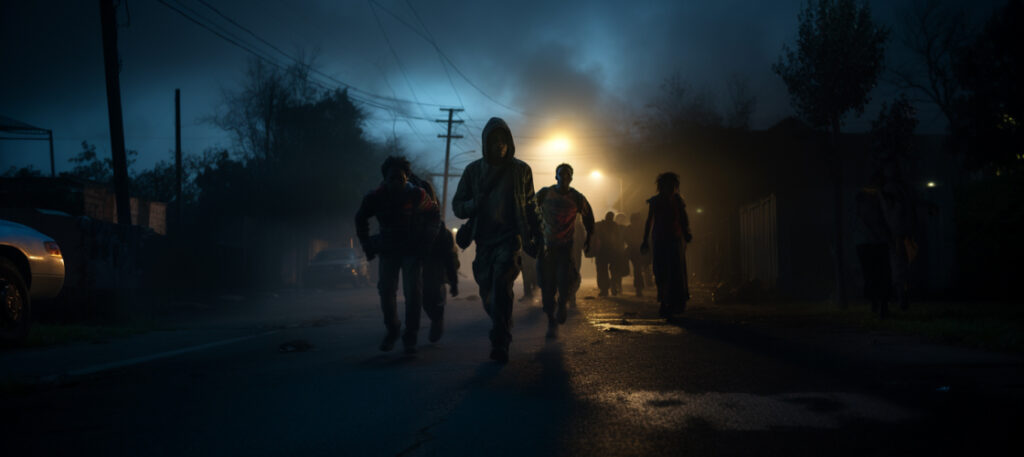What is the new zombie drug, and why is it called so?
Initially found in Philadelphia, Xylazine, an FDA-approved drug, subsequently made its way to San Francisco and Los Angeles. It is primarily used as a veterinary sedative and analgesic for large animals (mostly mammals) such as horses, cattle, etc. However, despite its intended use, it’s illicitly used as a recreational drug in some parts of the world.
Derived its name, ‘zombie drug’ because of its zombie-like symptoms on the users, including excessive drowsiness and breathing difficulties, which cause users to appear highly sedated.
How does it zombify people?
Xylazine acts on the central nervous system, slowing down brain activity and causing sluggishness, lethargy, and loss of coordination. It also slows people’s breathing and heart rate as well as lowers their blood pressure. In a highly sedated or unconscious state, much like zombies, users move slowly, become unresponsive and lack awareness of their surroundings.
The double trouble
When taken in greater doses, xylazine induces complete unconsciousness due to its tranquillizing effects. When mixed with fentanyl, it is known to increase the ‘hit’ exponentially. These effects of xylazine may cause users to lose consciousness and remain unconscious for several hours, as opposed to the semi-conscious euphoria induced by opioids alone. It is not surprising that those who use drugs in this manner are at an increased risk of harm, such as being vulnerable to sexual assault or being involved in accidents, such as being struck by a vehicle.
The overdose of xylazine is fatal because people do not respond to naloxone, also known as Narcan, the drug most frequently used to reverse an overdose.
The toll of too much
In addition, repeated and continuous exposure to xylazine can lead to the formation of open sores, which can become severe and rapidly spread, leading to amputation in extreme cases.
The recent surge in overdose deaths in the United States has prompted the question of whether xylazine has played a role. A study conducted in 10 cities and states found that in 2015, xylazine was present in less than 1% of overdose deaths, but in 2020, a year that saw a record-breaking number of overdose deaths in the U.S., it was found in 6.7% of cases. In 2021, the number of overdose deaths surpassed 107,000, breaking the record again. While the study does not conclusively attribute the increase in fatalities to xylazine, it is considered to be a contributing factor.1
References
- Friedman J, Montero F, Bourgois P, Wahbi R, Dye D, Goodman-Meza D, Shover C. Xylazine spreads across the U.S.: a growing component of the increasingly synthetic and polysubstance overdose crisis. Drug and alcohol dependence. 2022 Apr 1;233:109380.

